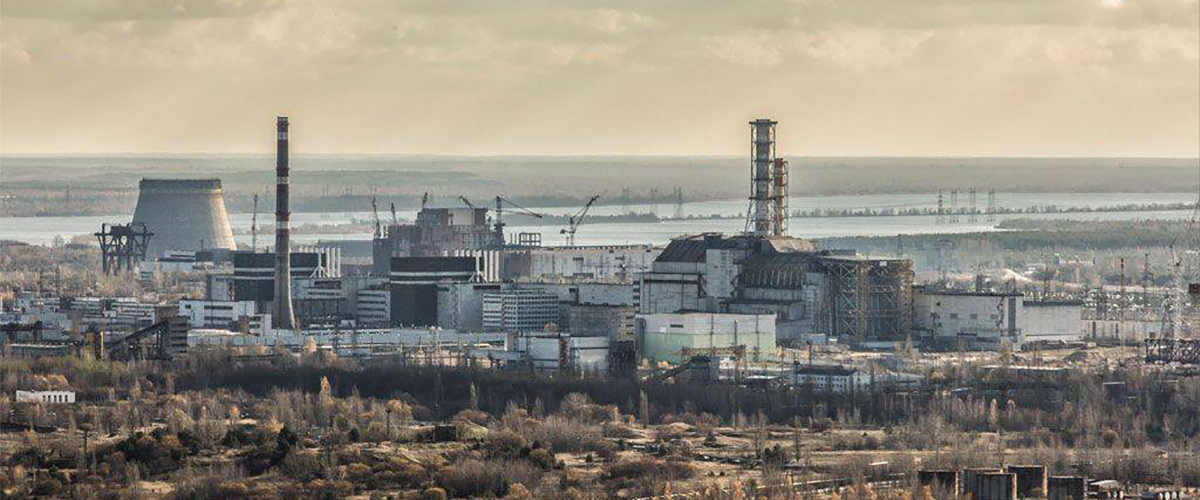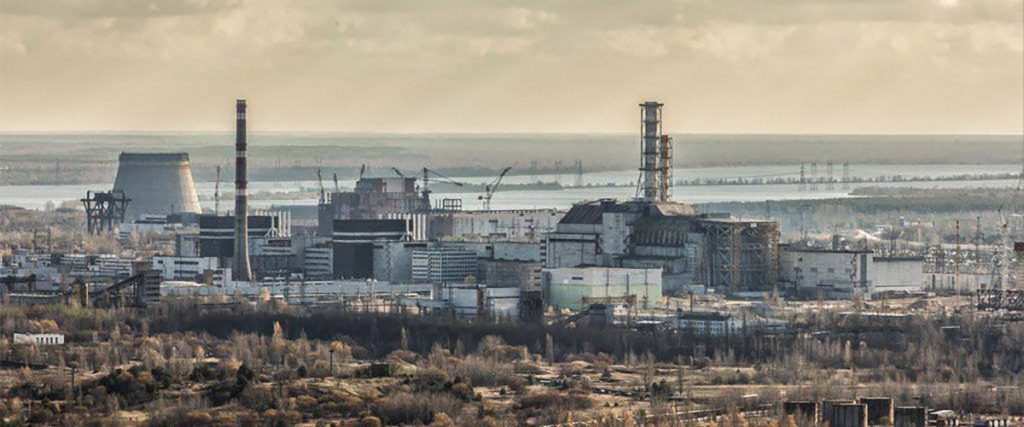
An explosion at the Chernobyl Nuclear Power Plant in 1986 spread a radioactive cloud over large parts of the Soviet Union, now the territories of Belarus, Ukraine and the Russian Federation. Nearly 8.4 million people in the three countries were exposed to the radiation.
The Soviet Government acknowledged the need for international assistance only in 1990. That same year the General Assembly adopted resolution 45/190, calling for “international cooperation to address and mitigate the consequences at the Chernobyl nuclear power plant.” That was the start of the United Nations’ involvement in the Chernobyl recovery. An Inter-Agency Task Force was established to coordinate the Chernobyl co-operation. In 1991 the UN created the Chernobyl Trust Fund – currently under the management of the Office for the Coordination of Humanitarian Affairs (OCHA). Since 1986, the UN family of organizations and major NGOs have launched more than 230 different research and assistance projects in the fields of health, nuclear safety, rehabilitation, environment, production of clean foods and information.
In 2002 the United Nations announced a shift in the Chernobyl strategy, with a new focus on a long-term developmental approach. UNDP and its regional offices in the three affected countries took the lead in the implementation of the new strategy. There is still a great deal of work that needs to be done in the affected region. To provide support to international, national and public programmes targeted at the sustainable development of these territories, in 2009 UN launched the International Chernobyl Research and Information Network (ICRIN).
On 8 December 2016 the United Nations General Assembly adopted a resolution designating 26 April as International Chernobyl Disaster Remembrance Day. The General Assembly recognized that, “three decades after the Chernobyl disaster, the still-persistent serious long-term consequences thereof, as well as the continuing related needs of the affected communities and territories,” and invited “all Member States, relevant agencies of the United Nations system and other international organizations, as well as civil society, to observe the day.”
Background
Chernobyl Nuclear Power Plant, 26 April 1986 – A routine 20-second shut down of the system seemed to be another test of the electrical equipment. But seven seconds later, a surge created a chemical explosion that released nearly 520 dangerous radionuclides into the atmosphere. The force of the explosion spread contamination over large parts of the Soviet Union, now the territories of Belarus, Ukraine and Russia. According to official reports, thirty-one people died immediately and 600,000 “liquidators,” involved in fire-fighting and clean-up operations, were exposed to high doses of radiation. Based on the official reports, nearly 8,400,000 people in Belarus, Russia and Ukraine were exposed to the radiation, which is more than the population of Austria. About 155,000 sq. km of territories in the three countries were contaminated, which is almost half of the total territory of Italy. Agricultural areas covering nearly 52,000 sq. km, which is more than the size of Denmark, were contaminated with cesium-137 and strontium-90, with 30-year and 28-year half-lives respectively. Nearly 404,000 people were resettled, but millions continued to live in an environment where continued residual exposure created a range of adverse effects.
No reports were released until the third day after the Chernobyl explosion. Then, Swedish authorities correlated a map of enhanced radiation levels in Europe with wind direction and announced to the world that a nuclear accident had occurred somewhere in the Soviet Union. Before Sweden’s announcement, the Soviet authorities were conducting emergency fire-fighting and clean-up operations but had chosen not to report the accident or its scale in full. No established legitimate authority was able to immediately address the situation and provide answers to questions such as: Is it safe to leave the house? Is it safe to drink water? Is it safe to eat local produce? Communicating protective measures early would also have most likely enabled the population to escape exposure to some radionuclides, such as iodine 131, which are known to cause thyroid cancer. Early evacuation would have helped people avoid the area during the period when iodine 131 is most dangerous, 8-16 days after release.
During the first four years after the Chernobyl accident the Soviet authorities decided to largely deal with the consequences of the explosion at a national level. Without Soviet endorsement, the United Nations and its partners sought ways to provide emergency support, which included assessing the nuclear safety and environmental conditions of the contaminated area, and diagnosing the various medical conditions that resulted from the accident. The UN also focused on raising the awareness of the area’s inhabitants, teaching them how to protect themselves from radionuclides found in the environment and in agricultural products.
Many count the year 1990 as a crucial point in the United Nations’ involvement in the Chernobyl recovery. The Soviet Government acknowledged the need for international assistance. As a result, the General Assembly adopted Resolution 45/190, which called for “international cooperation to address and mitigate the consequences at the Chernobyl nuclear power plant”. This Resolution also entrusted one of the Under-Secretary-Generals with the task of coordinating the Chernobyl co-operation and called for the formation of an Inter-Agency Task Force. The Quadripartite Coordination Committee, which consists of ministers from Belarus, Russia and Ukraine, as well as the United Nations Chernobyl Coordinator, became part of the coordination mechanism at the ministerial level. In 1992, a year after the Task Force was established, the Department of Humanitarian Affairs, which came to be called the Office for the Coordination of Humanitarian Affairs (OCHA) in 1997, began to coordinate international cooperation on Chernobyl. To expedite financial contributions towards the Chernobyl activities, the Chernobyl Trust Fund was established in 1991 under the management of OCHA. OCHA began to manage a range of diverse tasks and responsibilities from strategy formulation and promotion to resources mobilization, advocacy and channeling donors’ contributions. Since 1986, United Nations organizations and major Non-Governmental Organizations and Foundations have launched more than 230 different research and assistance projects in the fields of health, nuclear safety, including the construction of the Shelter, socio-psychological rehabilitation, economic rehabilitation, the environment, production of clean foods, and provision of information.
Over time it has become clear that the task of environmental and health recovery cannot be separated from the task of development. In 2001, UNDP, and its regional director for the three affected countries, became part of the coordination mechanism for Chernobyl cooperation. In the following year, the United Nations announced a shift in strategy, with a new focus on a long-term developmental approach, as opposed to emergency humanitarian assistance.
In 2004, the UN Secretary General transfered the coordination responsibility from UN OCHA to UNDP as part of a shift in strategy based on the 2002 study “The Human Consequences of the Chernobyl Nuclear Accident: A Strategy for Recovery”. In the course of assuming coordination responsibilities, UNDP has identified three priority areas to pursue on Chernobyl:
- Information provision, including on promotion of healthy lifestyles
- Community-based social and economic development
- Policy advice, aimed at helping governments rationalize Chernobyl spending
In order to clarify the remaining issues, and maintain worldwide attention on Chernobyl, the United Nations has undertaken a number of new initiatives. The Swiss-funded Chernobyl website Chernobyl.info serves as an independent forum on Chernobyl. The Chernobyl Forum, initiated by IAEA, is aimed at generating consensus on a range of disputed issues and reviewing all the scientific evidence on the impact of the Chernobyl accident on human health and the environment. GreenFacts summarises Chernobyl’s Legacy Report provided reassuring findings about the impact of low-dose radiation. They will be used by UNDP as source material in efforts to ease the fears of the affected populations and provide useful advice on how to live and work safely in the region. The International Chernobyl Research and Information Network (ICRIN), initiative launched by OCHA and the Swiss Agency for Development and Cooperation (SDC), is carried out by UNDP focusing on information dissemination to the Chernobyl-affected communities and popularizing healthy lifestyles. The first phase of ICRIN – information needs assessments – had already been completed by UNDP Country offices in Belarus, Russian Federation and Ukraine.

